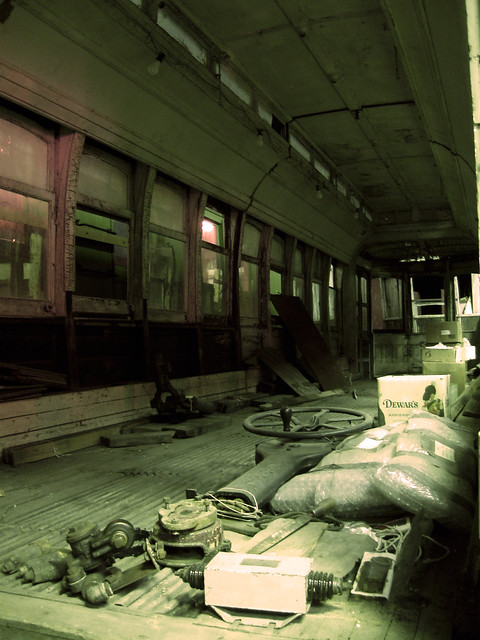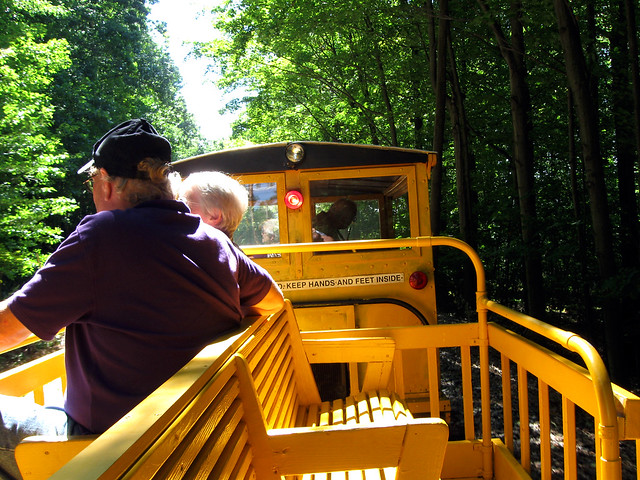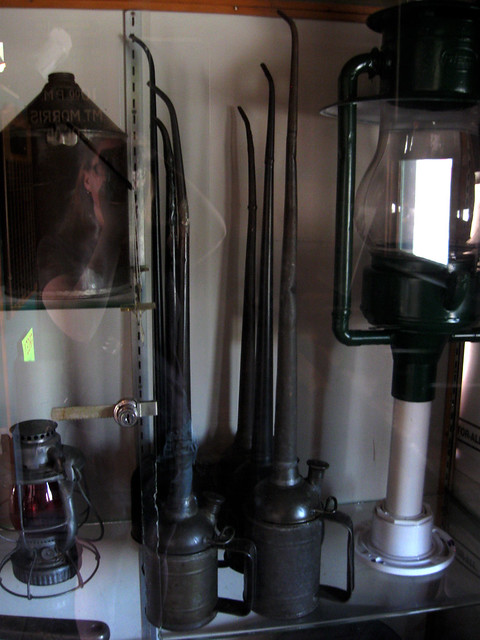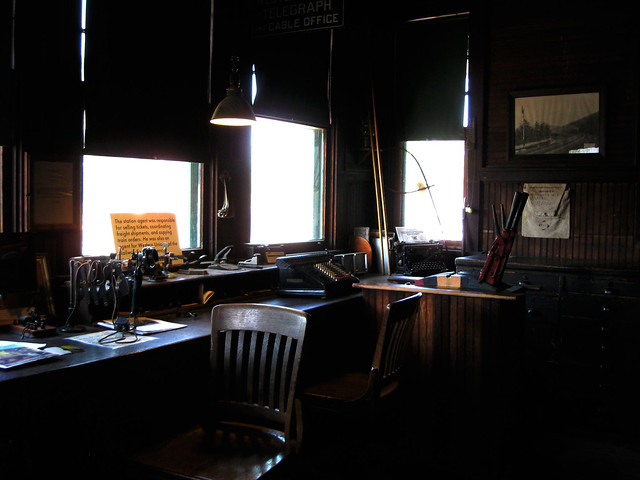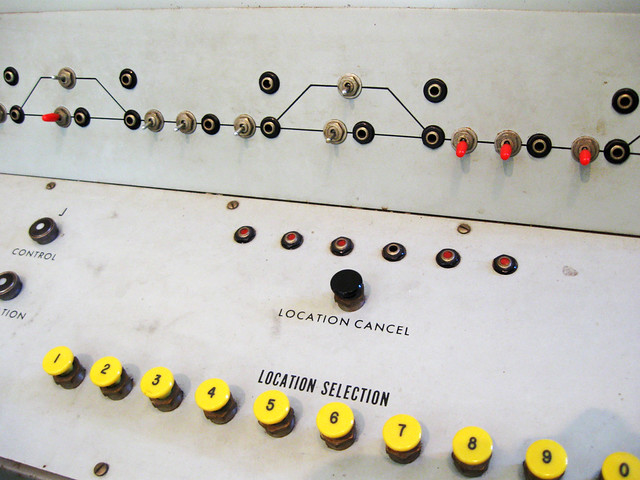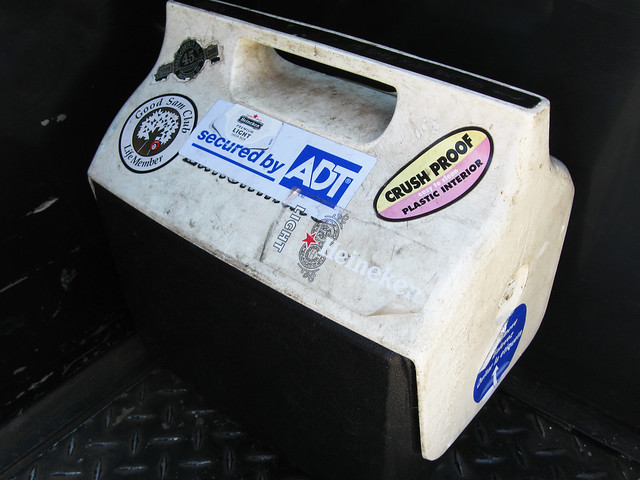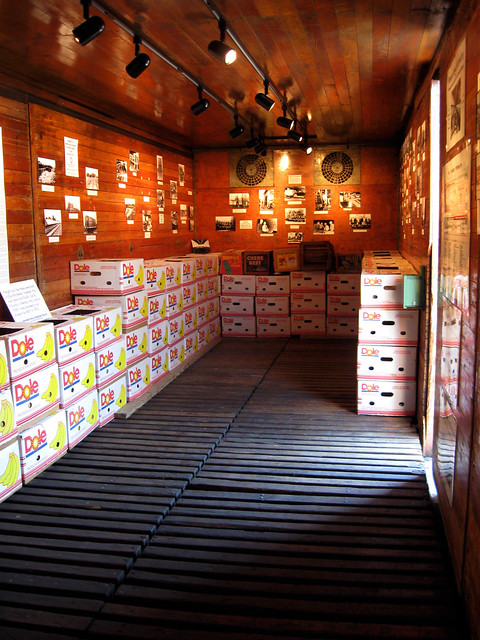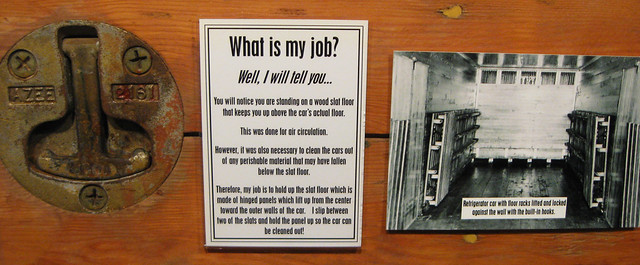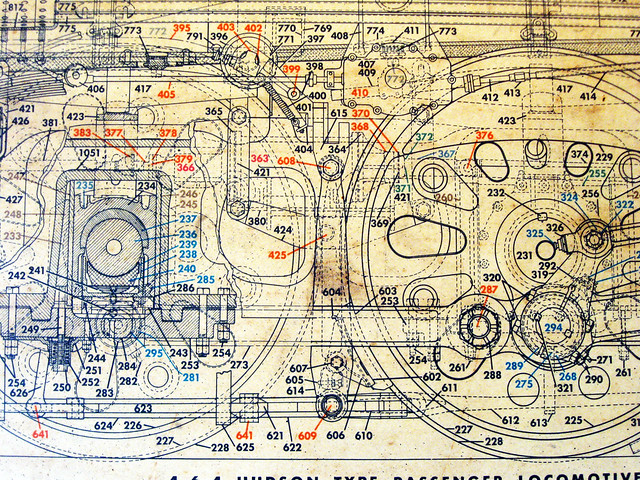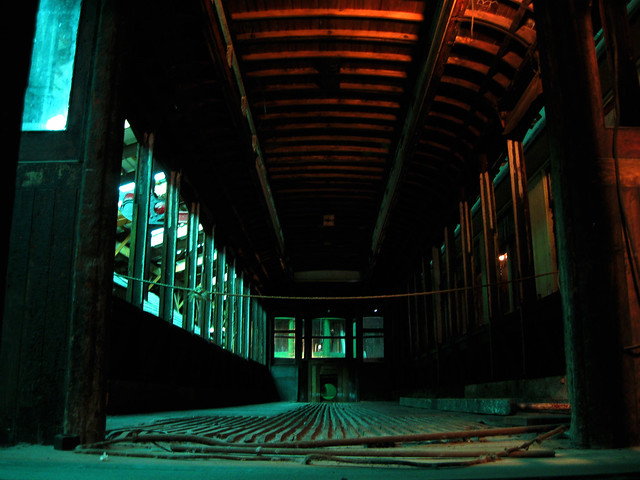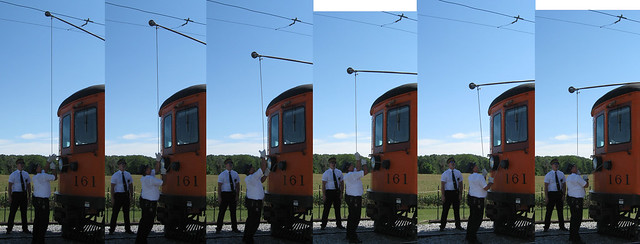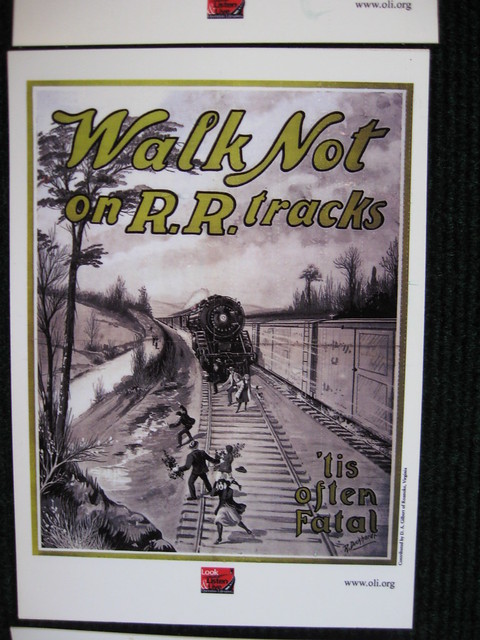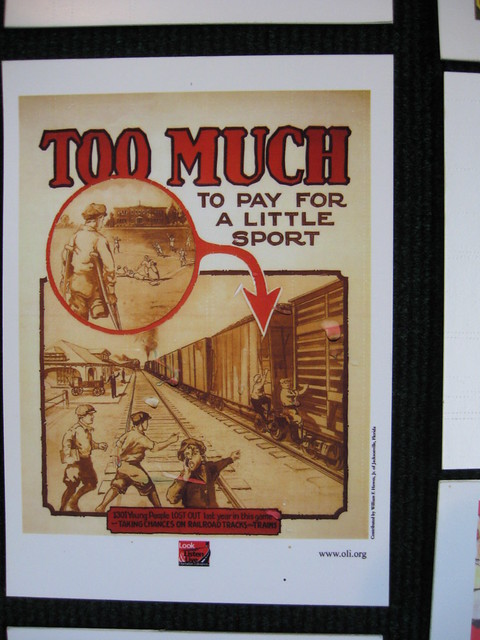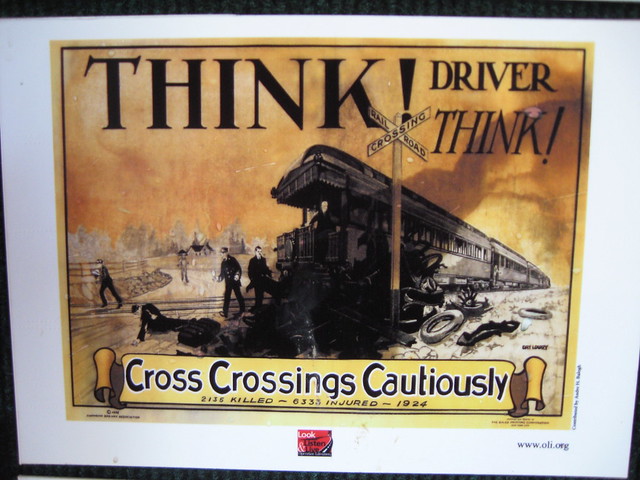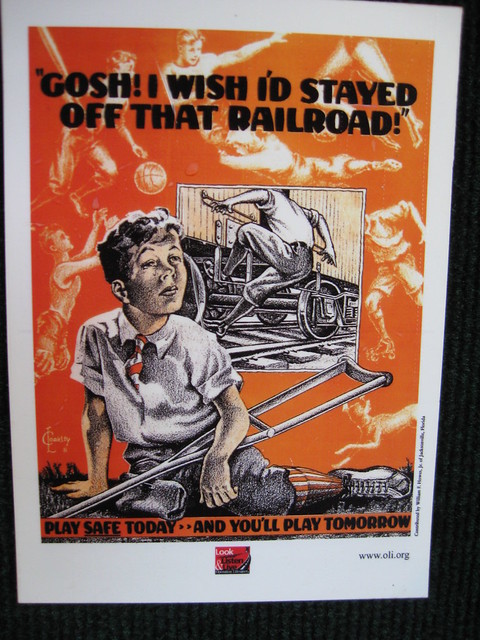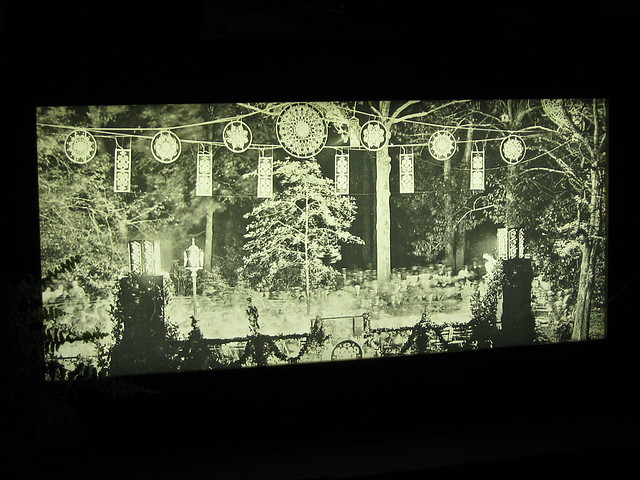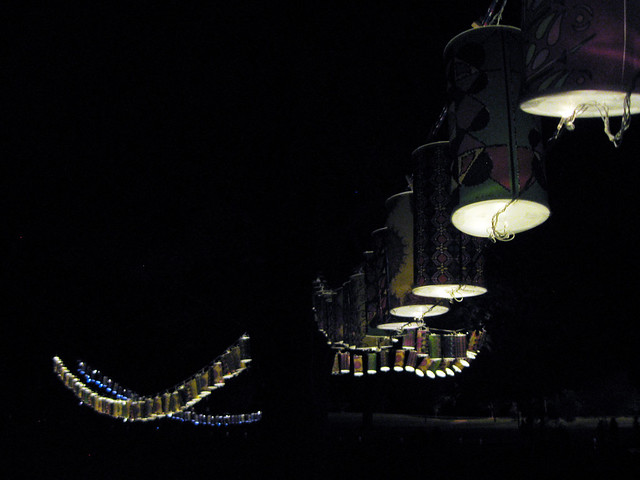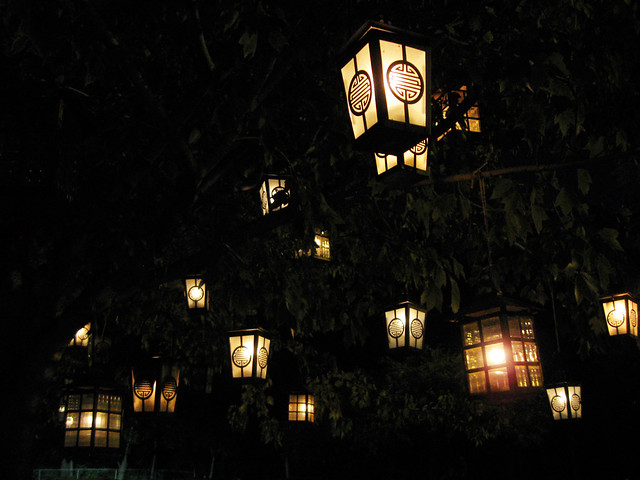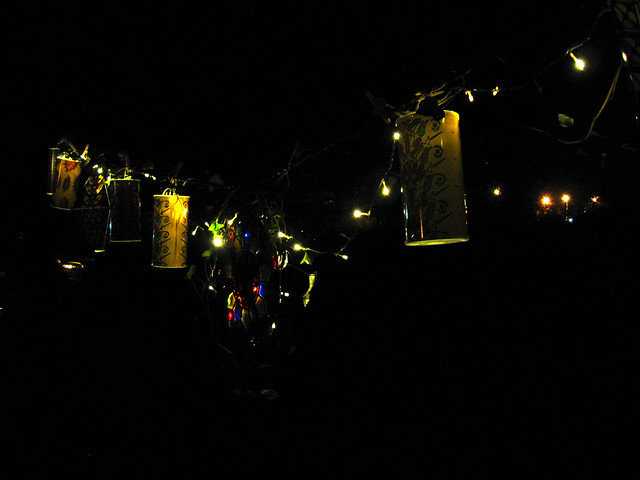It turned out the goats were actually the least interesting part. I was not expecting to be so utterly delighted by everything I saw. When I got into the main square, it felt like a circus. Since I've been so many times lately, I knew that my first order of business was, necessarily, to stop by the general store and buy a maple sugar cookie. Once the cookie had been safely deposited in my stomach, I was able to roam about happily with my camera.
The first tent I came to was the Punch & Judy tent. Punch & Judy have always creeped me out, but I was betting on a child-friendly show, and I was correct. This is Punch doing battle not with his wife but with an alligator.

The woman who was interpreting the goings-on for the children was delightful, and the puppeteers were top notch. I thought it was great that they were even dressed in period clothing when they came out and took their bows.
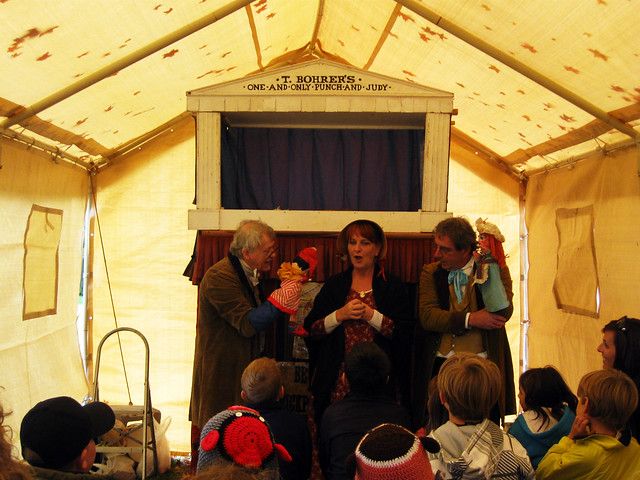
The next tent really was a bit of a circus: there was a lady inside )who seemed to have some relationship with Italy), and who walked a loose-rope, and juggled flaming sticks, and cajoled us into giving her money. I liked her so much that I went back for her second show.
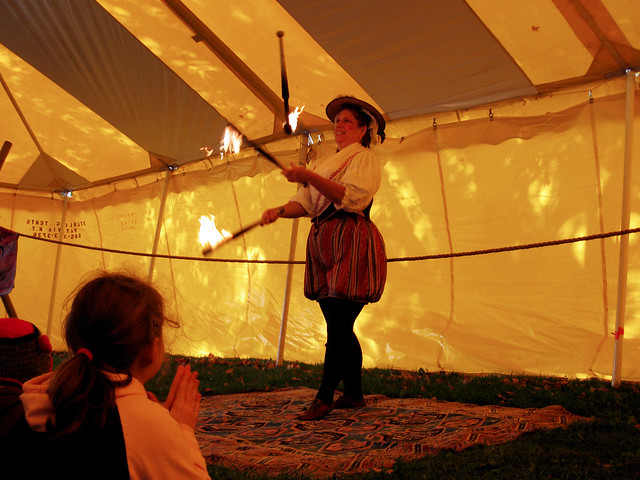
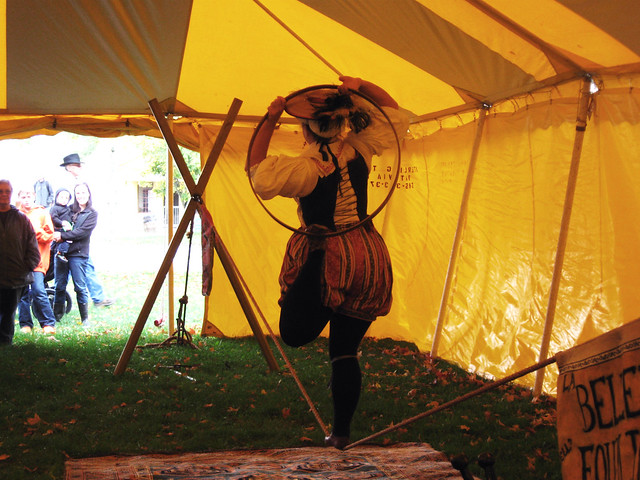
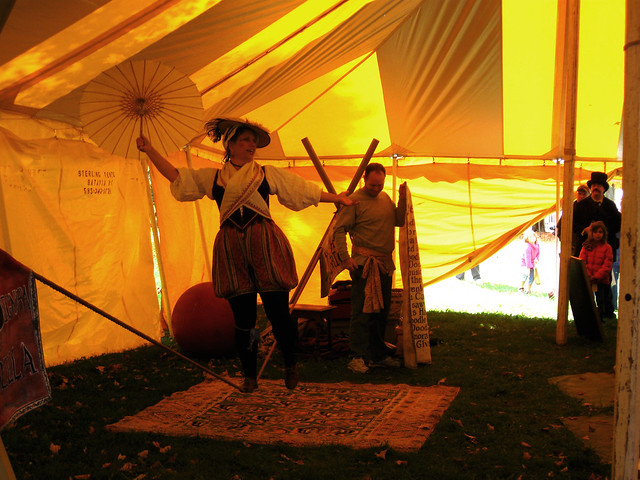
It was the perfect day for being outside in the fall: the leaves were changing and it was pleasantly cool and, of course, it smelled like woodsmoke.
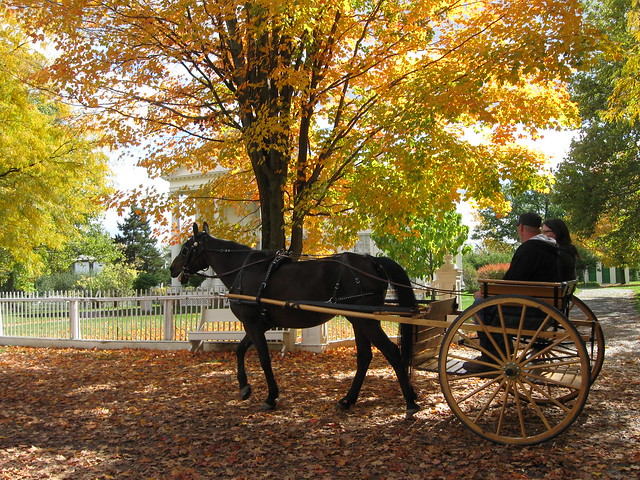
Most of the buildings were either empty or closed, however.

Some with good reason.
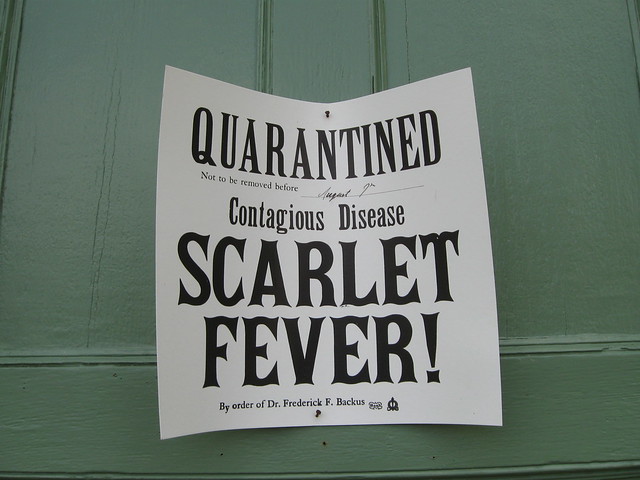
This one (below) never seems to be open, but right after I took this picture, a girl walked by with her cow, as if she were taking for its morning constitutional. Which is why I love places like this.
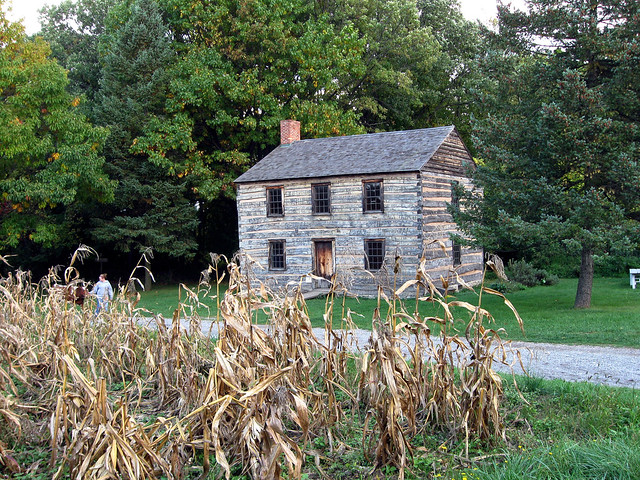
Speaking of our bovine friends:
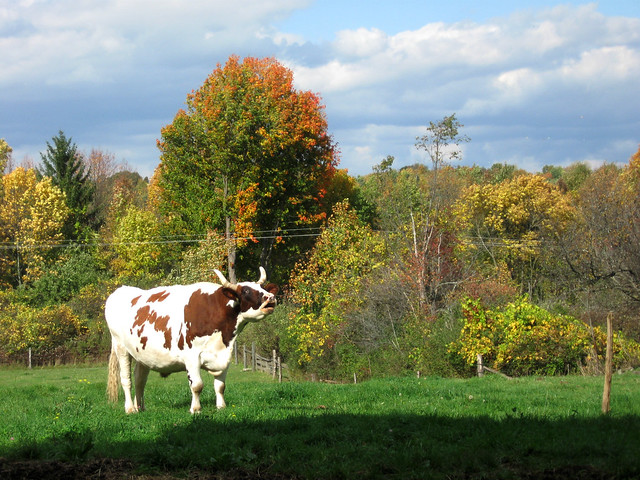
This bull had much to say, and vehemently.
While I was waiting around for some kind of demonstration, I caught this fellow using a corn peeler.
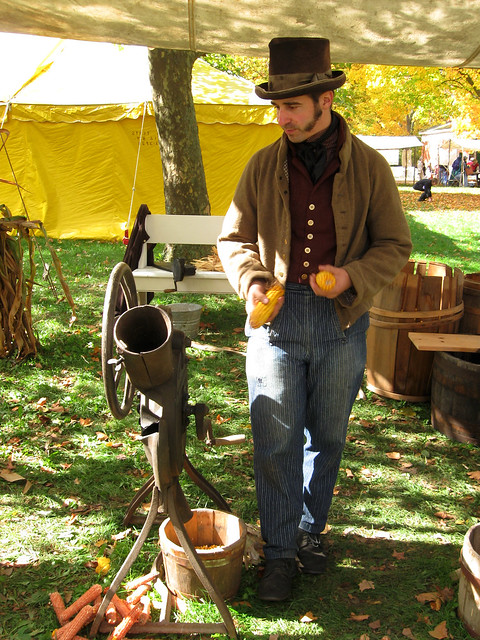
Corn peelers are hilarious. You get the crank going, stick the corn in the hole, and listen for a zzzzzzzt. Then the kernels drop from the bottom and the naked cob flies out the side in a markedly comical manner. I got to try it myself, and I'm telling you, farmers have it easy. This is the most fun ever.
The demonstration I was waiting for was the horse-powered thresher. I was less interested in the threshing than the horse-powering, which is just what it sounds like: a horse on a treadmill.

I've never seen an animal on a treadmill -- apparently, though, it used to be very common even with dogs. This horse seemed well aware of its rights and was not thrilled. Perhaps that's why it was so bad tempered. When it was in its pen, it looked perfectly friendly, but it was LYING.
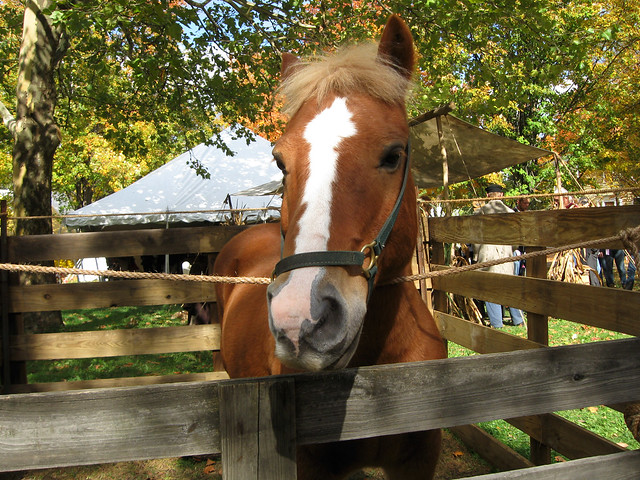
This lying liar tried to bite me. TWICE. I suppose the second time was really my own fault.
To comfort myself, I headed over to see the baked goods. It turns out, though, that nineteenth-century food that's been sitting around for five hours often isn't very appealing. But I was impressed with this:

And this:
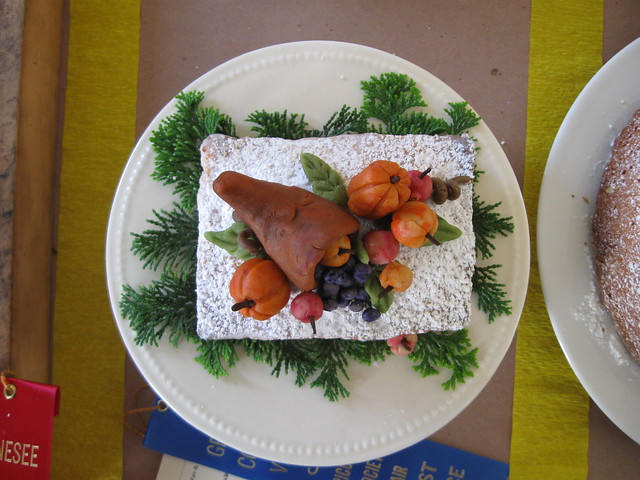
The highlight of the entire thing, curiously enough, was the vegetable tent. They had made nice beds of dirt to display the vegetables on, and they looked so handsome and colorful! I took pictures of almost all of them. After a while, the proprietors of the tent started looking at me funny.
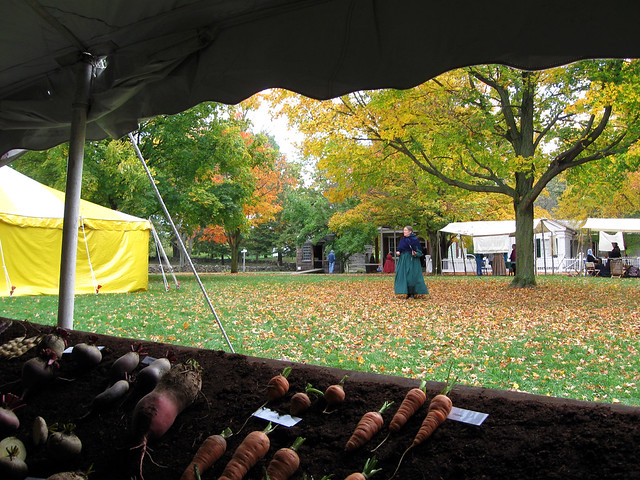
But it was magic in there. MAGIC, I tell you.
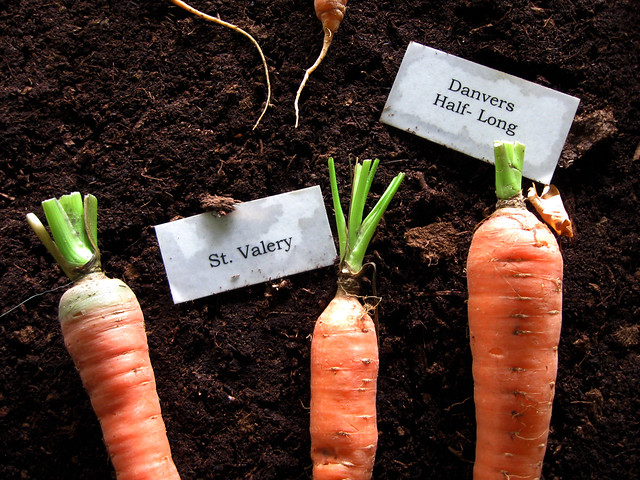
Look at these carrots! Have you ever seen such beautiful carrots!
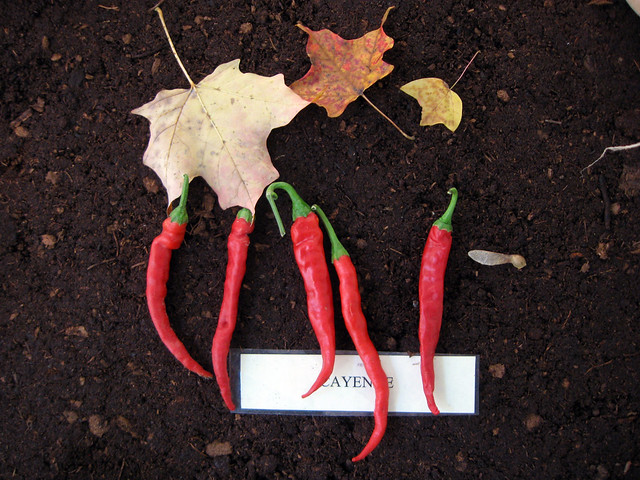
And these peppers! Even the leaves arranged themselves to put these peppers at an advantage! Nature bows to these peppers!

These tomatoes! Holy Moses, these tomatoes are gorgeous! I'd get wallpaper of this pattern!

The color! The delicate texture! If this isn't the finest rutabaga I've ever seen, I'll eat my hat. Or this rutabaga.

This leek. I mean. This is a divine leek.

I had a revelation when I got to this tomato. It spoke to me. It said, "Simon. This is a tomato speaking. Listen: you need to eat more vegetables." It was so remarkable I had to go back to the goat tent to get ahold of myself.
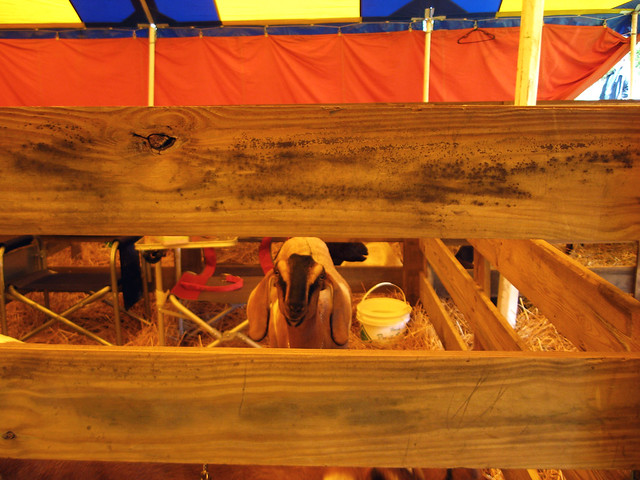
The goat told me I needed more hay in my diet, so now I don't know what to think.
By far the strangest part (even considering the talking tomato) was the exhibit of Harry Houdini paraphernalia. I saw some personal trinkets, some handcuffs, a wand. Some photos. They were shown to me by some descendants of his niece or goddaughter or something, who were peculiarly obsessed with him and could not have thought him to be a more important personage if he had been Winston Churchill. It was all very strange. I felt like I had come upon actual nineteenth-century hucksters, except that they were very sincere. It started to get colder and windier at that point, so I decided to call it a day without having my character analyzed scientifically through phrenology. I can only imagine what insights I missed.
Before I left, however, I did stop at the tent of curiosities, which had, and I am not kidding, gen-u-wine artifacts of American and world history, such as George Washington's cherry tree (which looked awfully fresh even for the time period we were supposed to be in), a glass container of tea from the Boston Tea Party, the Donner Party's kettle, a mummy, a piece of the Great Wall of China (which was a broken plate), and many things of that ilk. A corner of the tent was sectioned off; that was where they kept the Man Eating Chicken (Alive).
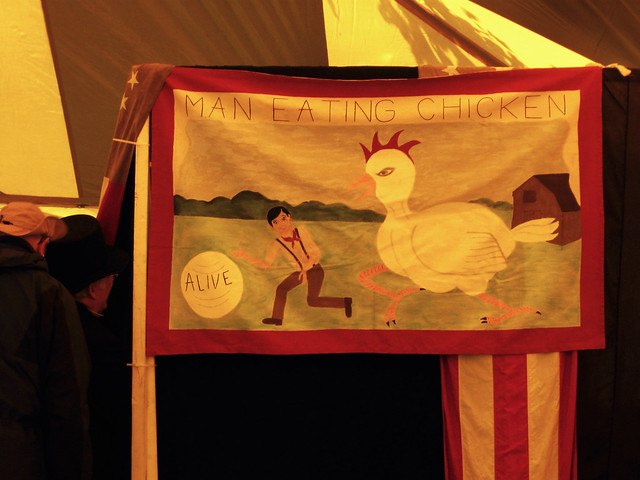
It was very shocking, I can tell you. Oh, the tearing of flesh!
The only thing that would have made this agricultural fair better was a butter sculpture. Other than that, I really couldn't ask for a more pleasant, amusing, informative, delicious, and light-hearted good time.


